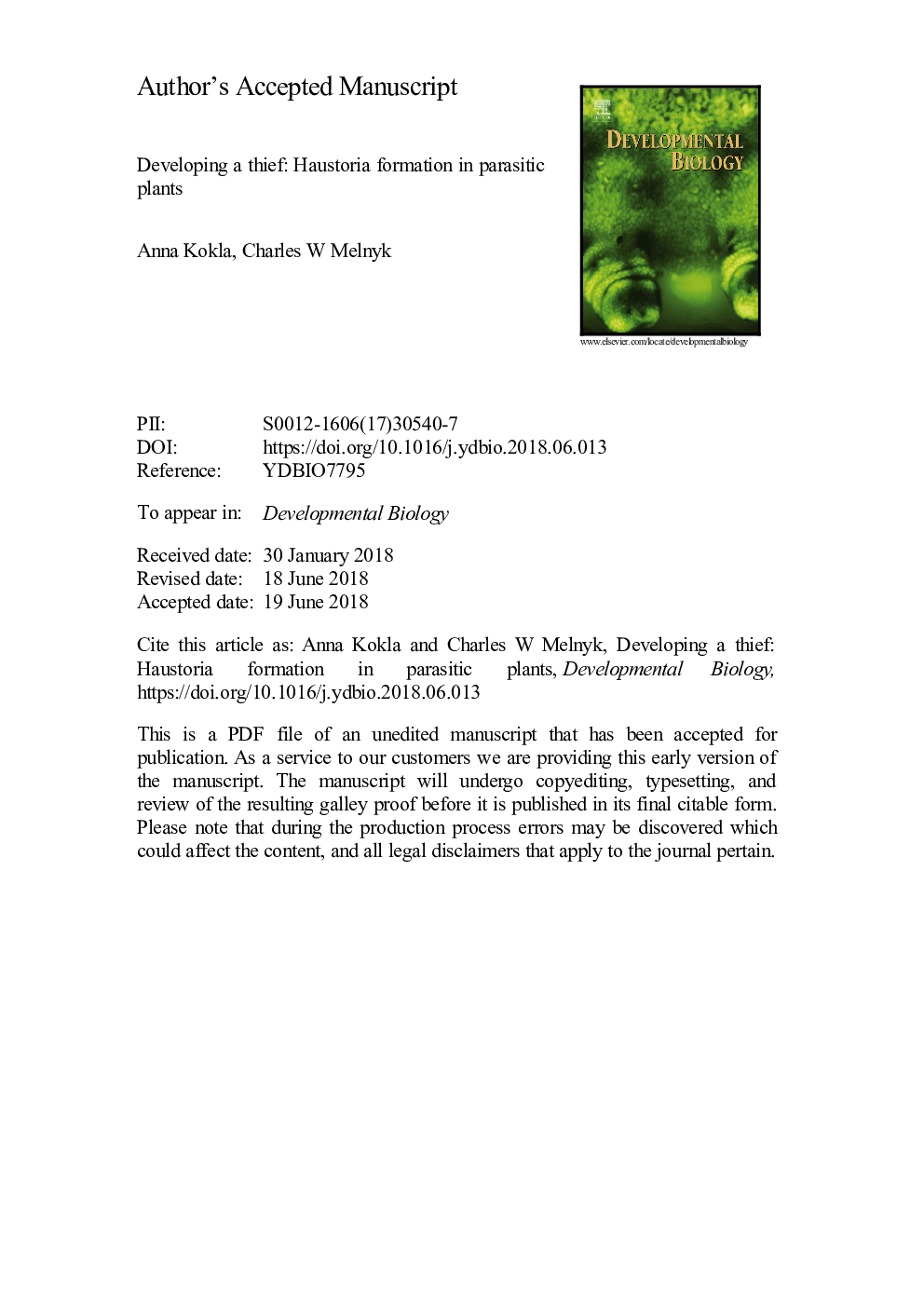| کد مقاله | کد نشریه | سال انتشار | مقاله انگلیسی | نسخه تمام متن |
|---|---|---|---|---|
| 10157809 | 1666485 | 2018 | 23 صفحه PDF | دانلود رایگان |
عنوان انگلیسی مقاله ISI
Developing a thief: Haustoria formation in parasitic plants
دانلود مقاله + سفارش ترجمه
دانلود مقاله ISI انگلیسی
رایگان برای ایرانیان
موضوعات مرتبط
علوم زیستی و بیوفناوری
بیوشیمی، ژنتیک و زیست شناسی مولکولی
بیولوژی سلول
پیش نمایش صفحه اول مقاله

چکیده انگلیسی
Parasitic plants are widespread pathogens that infect numerous plant species and cause devastating agricultural losses. They efficiently withdraw water, nutrients and sugars from their hosts by fusing tissues and connecting their vasculature to the host vasculature. This ability to parasitize is found in a wide range of species and has evolved at least eleven independent times, suggesting a recurring and flexible developmental strategy. Despite multiple independent origins, a common feature to parasitism is the formation of an invasive organ termed the haustorium. Parasitic plants form haustoria in their stems or roots and use this structure to penetrate host tissues and form vascular connections, often with distantly related species. This ability to join to an unrelated species is remarkable, and together with the economic importance of parasitism, there is a strong need to further understand how parasitic plants infect their hosts. Here, we discuss the developmental basis for plant parasitism, focusing on haustorial initiation, penetration and vascular formation. We also discuss future directions and outstanding questions in this emerging field.
ناشر
Database: Elsevier - ScienceDirect (ساینس دایرکت)
Journal: Developmental Biology - Volume 442, Issue 1, 1 October 2018, Pages 53-59
Journal: Developmental Biology - Volume 442, Issue 1, 1 October 2018, Pages 53-59
نویسندگان
Anna Kokla, Charles W. Melnyk,